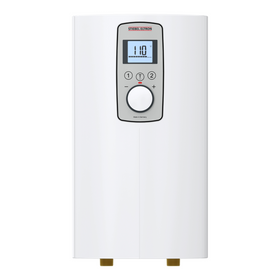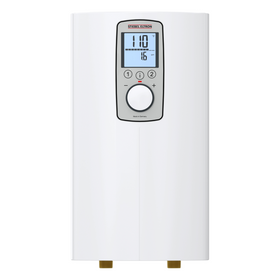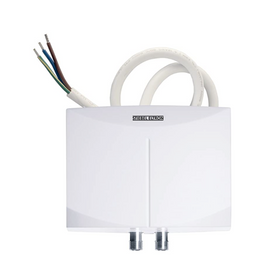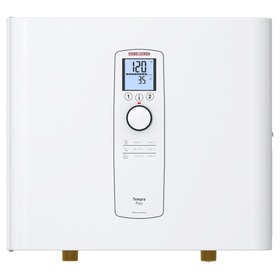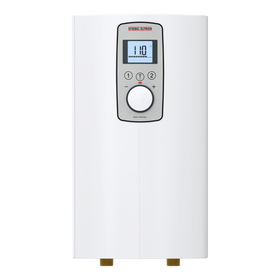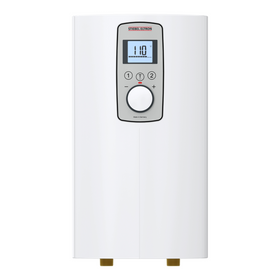
How to Collect Rainwater
Last Updated: Apr 13, 2025We all can collect rainwater at our homes. Unless regulated by your jurisdiction, collecting rainwater can help save precious clean water—and reduce your water bill. The approach does not have to be all-or-nothing; you can collect rainwater in many ways. So, let’s jump in and splash around and see how we can all save some water!
Table of Contents
- How Much Rainwater Can I Collect?
- How Can You Use Rainwater Around Your Home?
- Components of a Rainwater Harvesting System
- How Much Are Rainwater Harvesting Systems?
- Bottom Line
How Much Rainwater Can I Collect?
The answer to this question depends on two variables: your average yearly rainfall for your region and the area of your roof. For those living in the U.S., you can find your annual rainfall data here.
When calculating your roof area, you will want to calculate the horizontal plane since water falls from the sky vertically. If you are capturing rainwater from only one downspout, you will need to know your roof's area that pitches to that downspout. The key metric? Every inch of rain produces 0.62 gallons of water per square foot. So for a 10 x 10 area, one inch of rainfall will give you 62 gallons. To figure this out for your home, use this handy online calculator (here is the metric version). But before you begin, make sure your jurisdiction allows you to collect rainwater and find out if there are any usage limitations.
How Can You Use Rainwater Around Your Home?
Homeowners can use rainwater for all household needs. Historically, and in many farming communities around North America, homes had whole-house cisterns. Families would locate their cisterns in the farmhouse basement, and all the downspouts around the house drained into them. Some homes still operate 100-year-old open storage tanks. We don’t recommend open containers for safety and water quality reasons. When set up and sized correctly, closed cisterns can supply water to the whole house as needed.
Outdoor Gardening
The most common use of collected rainwater is for watering your flowers and gardens. Rain is good for plants, as it is naturally soft and has not been treated with chlorine, fluoride, etc. The amount of rainwater you need to collect depends on your garden's size and water needs. Typically, though, you would not need a whole house water collection system just for your gardens.
Indoor Plumbing Fixtures
Homeowners can use rainwater for laundry and flushing toilets, but there are complications. First, not all jurisdictions allow this. Second, you cannot connect the rainwater plumbing system to the rest of the water lines in your home. It should be a separate water system with its own water lines that are correctly and uniquely labeled. Some cities require different colored pipes, while others require labels every several feet stating it is rainwater.
If you want to use the water inside for flushing toilets and laundry, you will need to understand how much water those appliances use in an average week. This allows you to size the storage tank appropriately. You may want to use it for one or numerous fixtures, so you will have to be specific in your calculations. Choosing low-flow toilets and efficient ENERGY STAR washing machines will help you reduce your need for water in the first place.
Drinking-Water
Before using rainwater for drinking, you will want to know whether the water collected is safe. That answer depends on where you live as well as the material of your roof. Asphalt roof shingles are not ideal for drinking water because some of the bituminous materials abrade off and into the water, making it unhealthy. Wood shingles may be okay for drinking water, but some tannins can stain the water, change the taste, and affect water quality. Metal roofs are an excellent option for drinking water collection; make sure the roof’s finishes do not contain chemicals. Terracotta or cement tile, standard in many hotter regions, is ideal for collecting rainwater for drinking.
Components of a Rainwater Harvesting System
The main parts of a rainwater harvesting system include the collection area, the pre-filter, the storage tank, more filtration, and then supply lines.
- The roof is the collection area. The water runs off the roof, down the downspouts, and into a storage tank.
- The pre-filter captures the leaves and debris coming off the roof. Typically most of the debris is in the first few gallons (liters) of water, so you can use a “first flush” approach to divert the first few gallons (liters). The rest goes into a storage tank with a bug screen-sized filter added to capture leaves and larger bits from the roof.
How Much Are Rainwater Harvesting Systems?
A simple rain barrel collection system is relatively inexpensive, running between $50-$150 depending on size and add-ons (like hose attachments). Large rainwater harvesting systems can cost as much as $12,000 with a national average of $2,500.
Stephen Collette
Stephen Collette is a Building Biologist, Building Science Consultant, LEED Accredited Professional, and a Heritage Professional. Stephen is the owner of Your Healthy House and lives in Lakefield, ON with his wife and 2 daughters.







